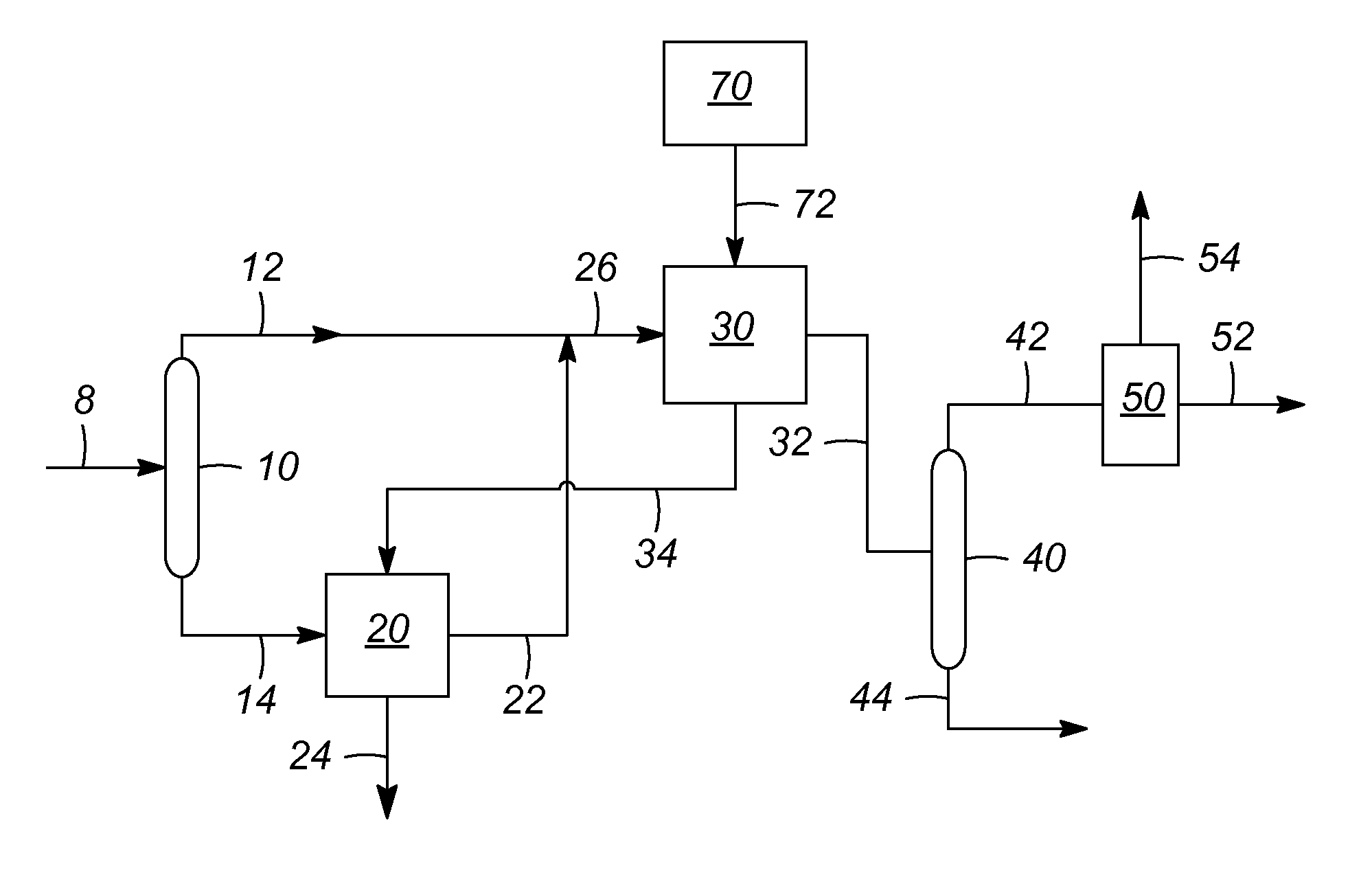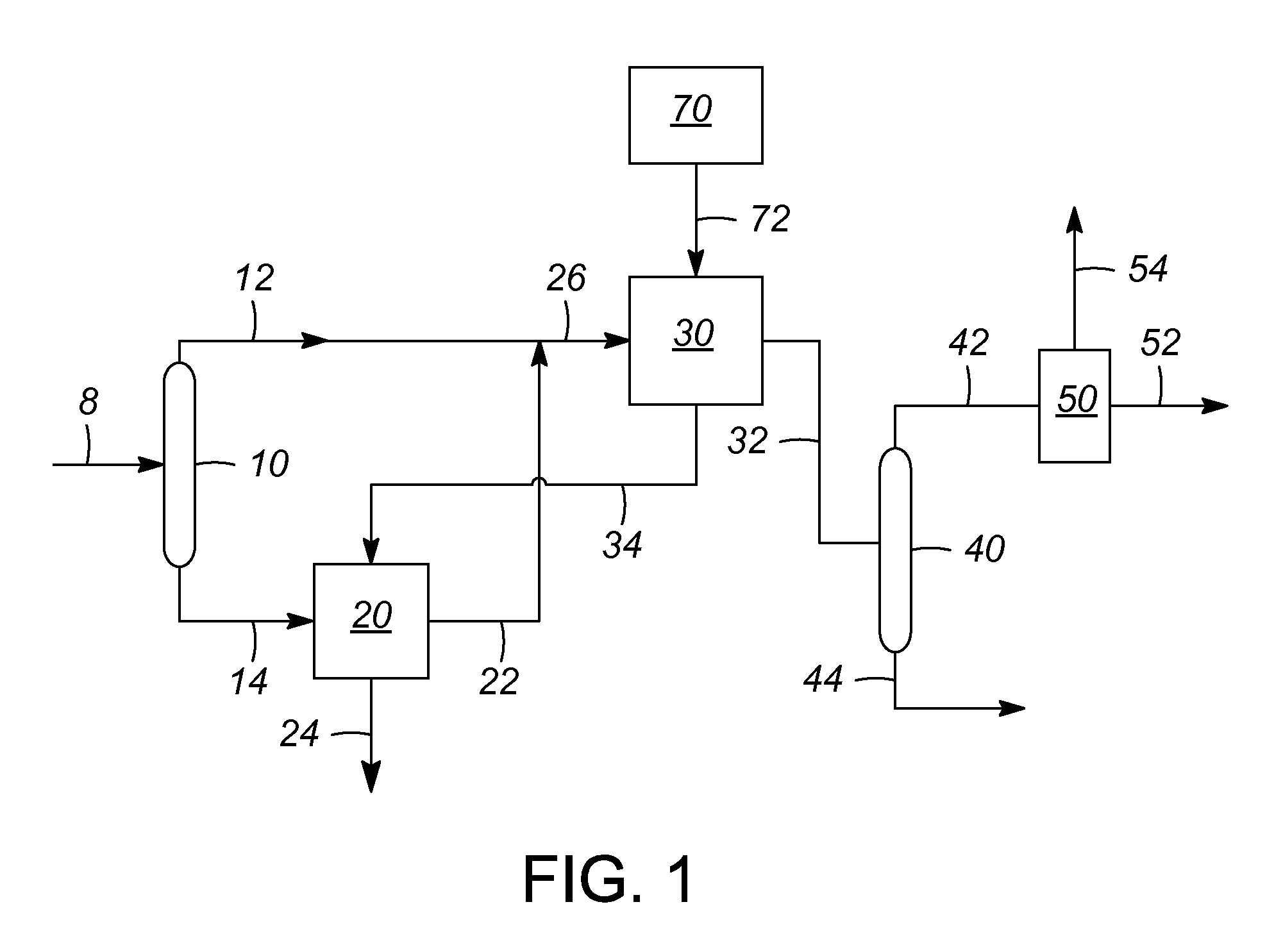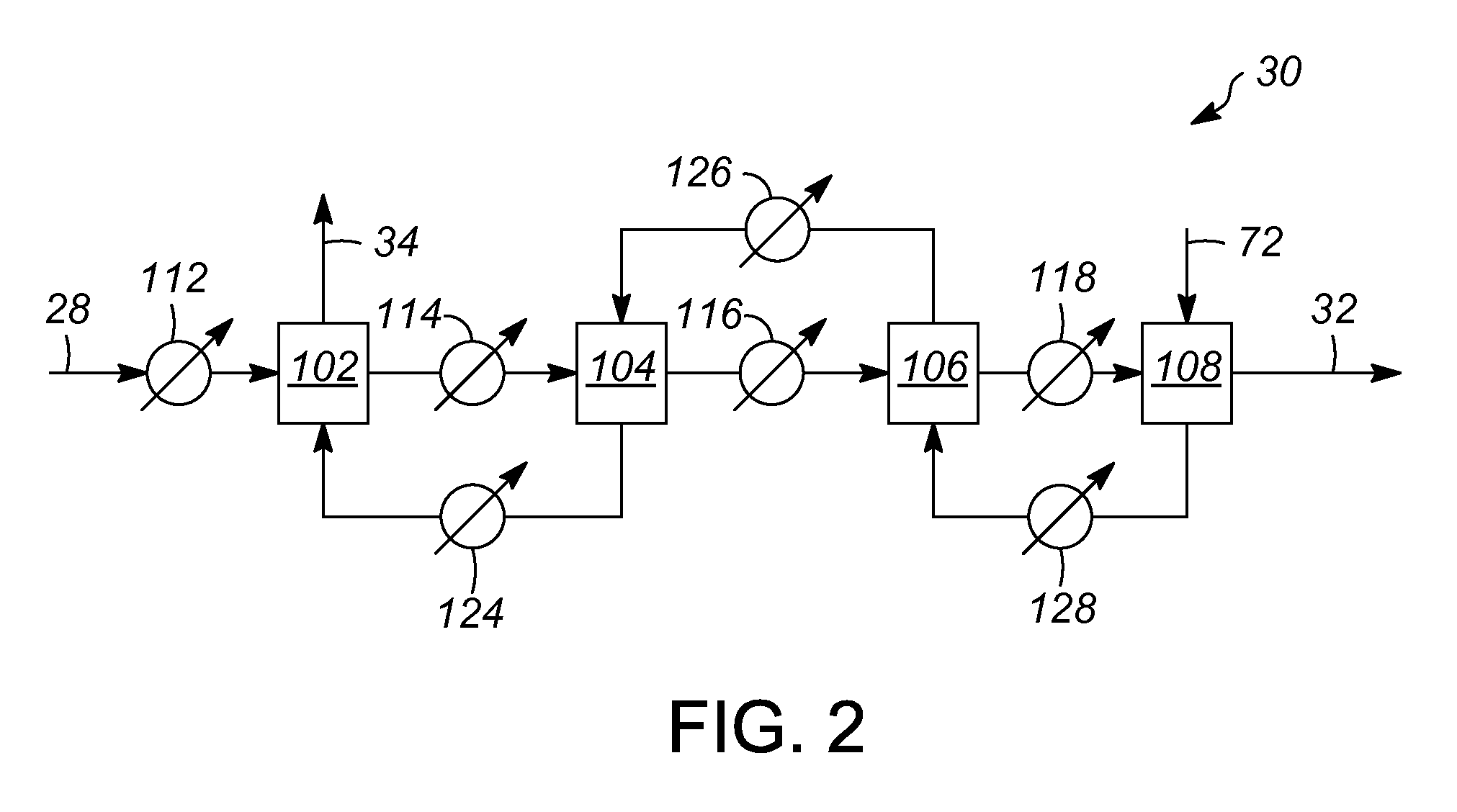Counter-current catalyst flow with split feed and two reactor train processing
a counter-current catalyst and reactor train technology, applied in the field of enhancing the production of aromatic compounds, can solve the problems of significant cost increases, limit the methods and catalysts, etc., and achieve the effect of minimizing the temperature drop in the reaction system and improving the yield of aromatics
- Summary
- Abstract
- Description
- Claims
- Application Information
AI Technical Summary
Benefits of technology
Problems solved by technology
Method used
Image
Examples
Embodiment Construction
[0013]A process is presented for addressing the need to increase the yields of benzene, toluene and xylenes from a hydrocarbon feedstream. The hydrocarbon feedstream is usually a full boiling range naphtha feedstream and the naphtha feedstream is reformed to generate C6 to C10 aromatics. The reformation process involves a catalytic reactor to selectively convert naphthenes and paraffins to aromatic compounds. In general, catalytic reforming generates unwanted byproducts, which include methane, ethane and to a lesser degree propanes and butanes. These are low value products and processes that reduce the formation of these byproducts and increase the amount of aromatics improves the economics of the reforming process. Optimization of catalyst usage and process flow can provide significant improvements.
[0014]Catalytic reforming of hydrocarbons proceeds through numerous chemical reaction pathways. The reforming reaction rates vary with temperature, and different compounds within the hyd...
PUM
| Property | Measurement | Unit |
|---|---|---|
| temperature | aaaaa | aaaaa |
| temperature | aaaaa | aaaaa |
| temperature | aaaaa | aaaaa |
Abstract
Description
Claims
Application Information
 Login to View More
Login to View More - R&D
- Intellectual Property
- Life Sciences
- Materials
- Tech Scout
- Unparalleled Data Quality
- Higher Quality Content
- 60% Fewer Hallucinations
Browse by: Latest US Patents, China's latest patents, Technical Efficacy Thesaurus, Application Domain, Technology Topic, Popular Technical Reports.
© 2025 PatSnap. All rights reserved.Legal|Privacy policy|Modern Slavery Act Transparency Statement|Sitemap|About US| Contact US: help@patsnap.com



